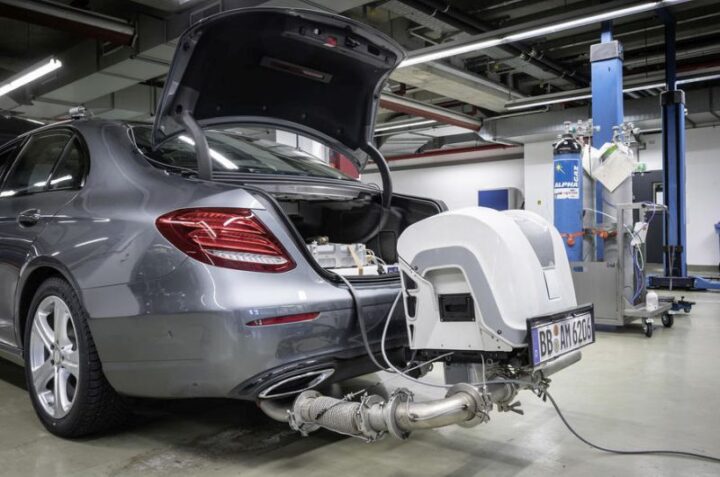Will Euro 7 "kill" diesel and gasoline?
Around 3.6 million new cars were registered in Germany in 2019; in 2020 they will be significantly less because of the coronavirus pandemic. From 2025, when the new Euro 7 emissions standard comes into effect across the EU, there will likely be far fewer – because many of the current models will not have them at all. Because the European Commission, headed by Ursula von der Leyen, is planning the strictest ever standards for harmful emissions when introducing the next Euro standard Senzor debit aer Hella.

Strict fleet CO2 emission norms have long been a clarification, now pollutants such as NOx (nitrogen oxides) are being discussed, which have already led to driving bans in many European cities. On behalf of the EU, a 66-page study of experts from all over Europe ("Advisory Group on Vehicle Emission Standards") that it reached is discussed. Here are some of the main points of reference:
• In the future, new cars must be able to emit a maximum of 30 mg NOx per km, and in a subsequent scenario – even as little as 10 mg/km. The previous permissible values were 60 mg for gasoline engines, 80 mg for diesel engines. Carbon monoxide should be reduced from 1000/500 mg to 300, respectively 100 mg.
• The RDE test procedure, which uses a mobile device to measure compliance with limit values even in real driving conditions (PEMS, Portable Emission Measurement System), should be made more stringent. RDE (Real Driving Emissions) observes certain parameters (average speed, outside temperature, altitude, mileage of at least 16 km). Example: after a cold start, until the catalytic converter warms up, cars emit more harmful emissions than at operating temperature, also when driving at full throttle. In the new test procedure, full throttle is allowed, theoretically all the time, only the distance is 5 km shorter. In the future, cars will have to meet these values at temperatures from -10 to +40 degrees Celsius, even at an altitude of 1000 or 2000 meters above sea level (so far - a maximum of 700 m) and with a theoretical "life" of 15 years or 240,000 mileage (so far – 160,000). The rules should also apply to roof boxes, bicycle racks or trailers.
• The previous tolerance of 25 to 30 mg when measuring PEMS should be dropped. In general, this means that in order for a car to reliably 'fall' below 30mg, it must actually emit 0mg of NOx. This would be a challenge for modern internal combustion engines, which have never been greener before. Experts in the industry are talking about a "declaration of war" and a de facto end to diesel and gasoline engines if Euro 7 becomes a reality. "The Commission wants to enforce that, in practice, in the future the car must emit no harmful emissions in every situation on the road - be it towing a trailer in the mountains or when "bumping" around town. This is technically impossible and everyone knows it," criticized the head of the VDA (Union of Automobile Manufacturers in Germany) Hildegard Müller. Engineers say the standards were set in such a way that they could not be met at all.
- 2026-01-04 - GT3 RS (991): one of the most radical 911s of all time
- 2026-01-03 - "This Dakar will be brutal"
- 2026-01-02 - Retrospect: The "Car made in Bulgaria" project enters a decisive phase
- 2026-01-01 - With a loss in value of around 60,000 BGN: E-Class T-model
- 2025-12-31 - "Balkan" 250 M1: the first serial Bulgarian motorcycle
- 2025-12-30 - What will the automotive world look like in 2026?
- 2025-12-29 - Renault Dauphine - a French touch on the Bulgarian market during communism
- 2025-12-28 - Mercedes-Benz L 319 and L319 D: an old acquaintance
- 2025-12-27 - 100 thousand kilometers with the Subaru Outback: strength lies in peace (EXTENDED TEST)
- 2025-12-26 - Peugeot 406 turns 30












